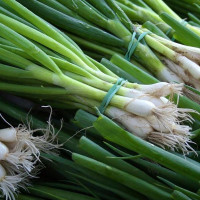Beans «Pockmarked» - a variety intended for home growing. This unpretentious plant does not require special conditions; it can perfectly decorate a gazebo or grow along a fence. The main condition for growth is warmth and a lot of sun, and as a result, from 1 plant you will get 500-600 grams of unripe blades or 150 grams (3/4 cup) of selected grains for making soups, lobio, pie fillings, and side dishes.
Beans contain vitamins (group B, C, A, E, PP), microelements, vegetable proteins and fiber - essential components of a healthy diet.
Characteristics:
- mid-season bean variety;
- for open ground;
- growing season - 100-120 days from sowing to harvesting;
- climbing plant up to 3 m high - needs support;
- the fruit is a fleshy pod of yellow-green color; when unripe, it can be used for culinary purposes as a vegetable bean; taste qualities are high;
- the grain is shaped like a kidney; bean seed color - burgundy spots on a cream background, variegated; in a pod up to 10 pcs. beans;
- yield is high, up to 3-4 kg/sq. m, taking into account the collection of unripe bean blades;
- The beans ripen together - the beans are harvested in August/September (depending on the planting date);
- application - universal: for culinary processing or long-term storage;
- planting with seeds - April/May;
- the variety is suitable for mechanized harvesting;
- resistance to diseases and weevil damage is high.
To grow beans at home, choose a well-lit area with sunshine. There are no special requirements for the soil - light loam is optimal. They sow when the earth warms up to a temperature of +12-14 degrees and the threat of frost has passed - most likely this will be in early May. Dry seeds are planted to a depth of 3-4 cm, in rows - with an interval of 10-12 cm in a row and row spacing of 40-50 cm.
For a vigorous plant, you will need support - a stretched net or ordinary stakes. After the emergence of seedlings, the row spacing is loosened and kept clean. The beans are hilled up and directed to grow along the support. Watering is only necessary in case of drought. Ripe pods are shelled, and the grain is dried and sent for processing or storage.

No questions about this product, be the first and ask your question.









